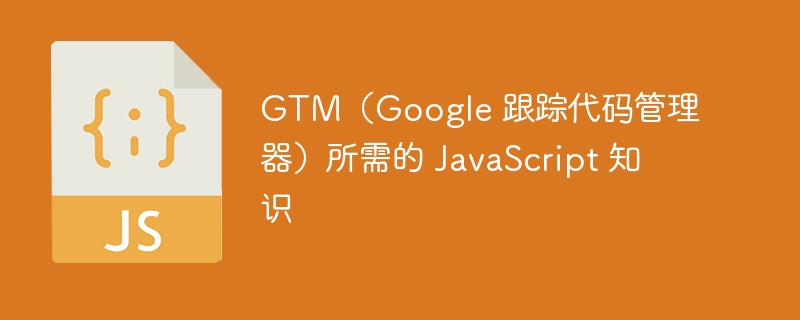

The tag management system called Google Tag Manager allows you to configure and quickly deploy tracking tags on your website or mobile app using a simple web interface. It has the same functionality as Google Tags. Tag Manager also supports tag version management and tag templates developed by organizations, communities, and third parties, enterprise collaboration tools, and security features. Tag Manager lets you quickly modify and deploy tags on your website from a web-based interface, while also optimizing tag deployment and reducing tag configuration errors.
A simple and dynamic computer programming language called JavaScript. It is used to generate dynamic client pages. It is a cross-platform open source language. The shorthand for a storage location that holds data in JavaScript is a variable.
Operators in JavaScript are symbols used to compute values, or in other words, allow us to perform operations on operands. Use arithmetic operators ( , -, *, /) to calculate the value and use assignment operators ( =, =, %=) to assign the value to a variable. To use Google Tag Manager, you need to understand each operator and variable.
Now you can use Google Tag Manager to control the tags on your website without changing the code. Google Tag Manager (GTM) supports variables so you can use page content as part of your structured data. Instead of duplicating information in GTM, use variables to retrieve structured data from the website. When data is duplicated in GTM, there is an increased chance that the page content will not match the structured data added by GTM.
Using JavaScript to generate all structured data or to supplement server-side rendered structured data is another technique for generating structured data. Regardless, when Google Search generates a page, it likely understands and leverages the structured data contained in the DOM.
It is possible to declare a large amount of code and compress it into a single block, which we can then use (and reuse) in the project with the help of functions. Sometimes they use certain values as "parameters" and then produce a certain value as a result. It is the part of the program that allows access to variables. In other words, the accessibility and visibility of a variable depends on its scope.
Given that JavaScript is similar to the C family of languages, it is reasonable to assume that scope in JavaScript is comparable to scope in most backend programming languages, for example. C, C or Java. It would be best if you understand try-catch blocks and if-else expressions to use Google Tag Manager.
Strings are used in JavaScript to represent and manipulate a set of characters. Strings can represent primitive data types and objects. JavaScript automatically converts raw strings to String objects so that even raw strings can access and use String methods. Strings play an important role in the Google Tag Manager code and are used in several places to track the HTML code of certain websites.
Any programming language can benefit greatly from using array methods. If you want to make your JavaScript smaller and easier to understand, you must be able to use techniques like filter() and forEach(). Each element in the array is checked by the filter() method, which creates a new array for each element that satisfies the test you provide in the callback. Each element in the array is received individually by the forEach() method, after which you can perform any operation you like on that element. The map() function again iterates over each element of the array, but this time the callback's code runs for each element and provides a new array and the result.
The Material Object Model (also known as the DOM) is a dynamic, hierarchical tree representation of documents on a website. It supports document manipulation, getting the value of the current website element and adding, editing or deleting other elements.
You can view the HTML code of any website by visiting the page and opening its source code (for example, CTRL U on Chrome (WIN)). This is the code created by programmers to give the website its current look. Using the DOM to retrieve the values of website elements comes with significant risks. If you plan to heavily scrape the DOM for tracking, be aware that developers may inadvertently change the content of the site, thereby breaking your GTM DOM element variables.
Here are six JavaScript topics you need to know to learn Google Tag Manager. There are many topics required to become an advanced Google Tag Manager expert. The benefit of using GTM or any library is that the library often addresses user concerns about cross-browser compatibility. This is only possible with GTM when using certain tags and macro templates. Once users start adding custom JavaScript themselves, they must be cautious about cross-browser support for their scripts.
The above is the detailed content of Required JavaScript knowledge for GTM (Google Tag Manager). For more information, please follow other related articles on the PHP Chinese website!




